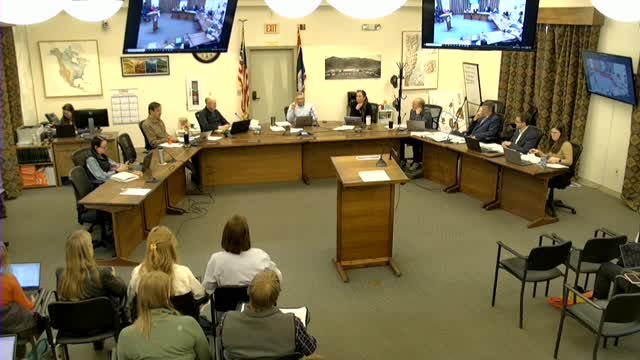Planning Commission evaluates 600 housing units proposal in Northern South Park
May 19, 2025 | Teton County, Wyoming
This article was created by AI summarizing key points discussed. AI makes mistakes, so for full details and context, please refer to the video of the full meeting. Please report any errors so we can fix them. Report an error »

During a recent government meeting held on May 19, 2025, Teton County officials engaged in a detailed discussion regarding land use and development in Area 1, particularly focusing on the requirements for affordable housing and associated land exactions. The meeting highlighted the complexities of balancing development needs with community resources, especially in light of increasing housing demands.
A key topic of discussion was the requirement for 600 housing units to be developed on approximately 74 acres in Area 1. Officials noted that the land must accommodate both unrestricted and restricted housing, with specific exactions for parks and schools mandated by local development regulations. It was emphasized that a significant portion of the land—up to 19 acres—would need to be allocated for these community amenities, placing additional pressure on the available acreage for housing.
Planning Director Chris Neubacher provided insights into the calculations surrounding land use, indicating that if a private property owner were to donate land for affordable housing, the actual usable acreage would be considerably less than the total donated. For instance, he estimated that out of a proposed 45-acre donation, only about 20 acres might be available for housing after accounting for necessary infrastructure and exactions. This underscores the challenges developers face in meeting both housing needs and regulatory requirements.
The discussion also touched on the implications of the Local Development Regulations (LDRs), which require that any development must adhere to established density and infrastructure standards. This means that as development applications are submitted, they must align with the minimum and maximum unit counts outlined in the master site plan, ensuring that community needs are met without compromising on quality or accessibility.
As the meeting progressed, commissioners raised questions about the legal and practical implications of the proposed conditions for development, particularly regarding compliance and assurance of land conveyance. The dialogue reflected a commitment to ensuring that development not only meets immediate housing demands but also supports long-term community goals.
In conclusion, the Teton County meeting highlighted the ongoing challenges of managing land use in a rapidly growing area. The discussions underscored the importance of careful planning and collaboration among stakeholders to ensure that development aligns with community needs while adhering to regulatory frameworks. As Teton County moves forward, the outcomes of these discussions will be critical in shaping the future of housing and community resources in the region.
A key topic of discussion was the requirement for 600 housing units to be developed on approximately 74 acres in Area 1. Officials noted that the land must accommodate both unrestricted and restricted housing, with specific exactions for parks and schools mandated by local development regulations. It was emphasized that a significant portion of the land—up to 19 acres—would need to be allocated for these community amenities, placing additional pressure on the available acreage for housing.
Planning Director Chris Neubacher provided insights into the calculations surrounding land use, indicating that if a private property owner were to donate land for affordable housing, the actual usable acreage would be considerably less than the total donated. For instance, he estimated that out of a proposed 45-acre donation, only about 20 acres might be available for housing after accounting for necessary infrastructure and exactions. This underscores the challenges developers face in meeting both housing needs and regulatory requirements.
The discussion also touched on the implications of the Local Development Regulations (LDRs), which require that any development must adhere to established density and infrastructure standards. This means that as development applications are submitted, they must align with the minimum and maximum unit counts outlined in the master site plan, ensuring that community needs are met without compromising on quality or accessibility.
As the meeting progressed, commissioners raised questions about the legal and practical implications of the proposed conditions for development, particularly regarding compliance and assurance of land conveyance. The dialogue reflected a commitment to ensuring that development not only meets immediate housing demands but also supports long-term community goals.
In conclusion, the Teton County meeting highlighted the ongoing challenges of managing land use in a rapidly growing area. The discussions underscored the importance of careful planning and collaboration among stakeholders to ensure that development aligns with community needs while adhering to regulatory frameworks. As Teton County moves forward, the outcomes of these discussions will be critical in shaping the future of housing and community resources in the region.
View full meeting
This article is based on a recent meeting—watch the full video and explore the complete transcript for deeper insights into the discussion.
View full meeting